White flowers are a classic and elegant addition to any garden, event or occasion. Whether it’s a wedding, a funeral, or just a simple garden, white flowers can add a touch of elegance and purity to any space. In this article, we will explore the significance, symbolism, and different types of flowers available.
Table of Contents
ToggleSignificance and Symbolism of White Flowers
White flowers are often associated with purity, innocence, and simplicity. They are a symbol of new beginnings, hope, and serenity. They also represent humility, grace, and elegance. In different cultures, white flowers hold different meanings. For example, in China, white chrysanthemums are a symbol of purity, while in Japan, white lilies are used to honor the dead.
Different Types of White Flowers
- White Roses: Roses are the most popular flower in the world, and white roses are no exception. They are often used for weddings, anniversaries, and other romantic occasions.
- Calla Lily: Calla lilies are known for their elegant and graceful appearance. Their trumpet-shaped blooms and long, slender stems make them a popular choice for weddings and other formal events.
- Daffodil: Daffodils are one of the first flowers to bloom in the spring and are often seen as a symbol of new beginnings. Their bright white petals and yellow centers add a cheerful touch to gardens and landscapes.
- Tulip: Tulips are another popular spring flower, known for their beautiful and distinctive cup-shaped blooms. They come in a variety of colors, but the white tulip is a classic choice.
- Hydrangea: Hydrangeas are known for their large, showy blooms that come in a variety of colors, including white. They are often used in wedding bouquets and centerpieces due to their striking appearance.
- Camellia: Camellias are a timeless flower that have been popular for centuries. They come in a variety of colors, but the white camellia is a classic and elegant choice.
- Peony: Peonies are known for their large, fragrant blooms that come in a variety of colors, including white. They are a popular choice for wedding bouquets and floral arrangements.
- Lily of the Valley: Lily of the valley is a delicate flower known for its sweet fragrance. Its tiny, bell-shaped blooms and slender stems make it a popular choice for wedding bouquets and floral arrangements.
- Dogwood: Dogwood trees are a popular choice for springtime, known for their large, showy white blooms. They are a favorite among gardeners and landscapers.
- Gardenia: Gardenias are a fragrant flower often used in weddings and other formal occasions. Their creamy white blooms and glossy leaves make them an elegant choice.
Want to learn all flower’s name? this blog will help you to find all the flower’s names in English and all language as well.
31 White Flowers Name List

#1. White Roses
White Roses are known for their large, fragrant blooms that are often used in wedding bouquets and other special occasions. They are also a popular choice for memorial gardens and to express sympathy.
- Scientific Name: Rosa alba
- Plant Type: White Roses are deciduous shrubs that produce beautiful, fragrant blooms. They are a part of the Rosaceae family and are native to Europe, North Africa, and Western Asia.
- Sunlight Needs: White Roses require at least 6 hours of direct sunlight per day to grow and bloom properly. They can also tolerate partial shade, especially during the hottest part of the day.
- Plant Size: The size of a White Rose plant can vary depending on the variety, but they typically grow between 3-6 feet (0.9-1.8 meters) tall and 2-4 feet (0.6-1.2 meters) wide.
- Growing Zones: White Roses can grow in USDA hardiness zones 4-9.
- Soil Needs: White Roses prefer well-draining, slightly acidic soil with a pH of 6.0-6.5. They also benefit from the addition of organic matter, such as compost or manure, to the soil.
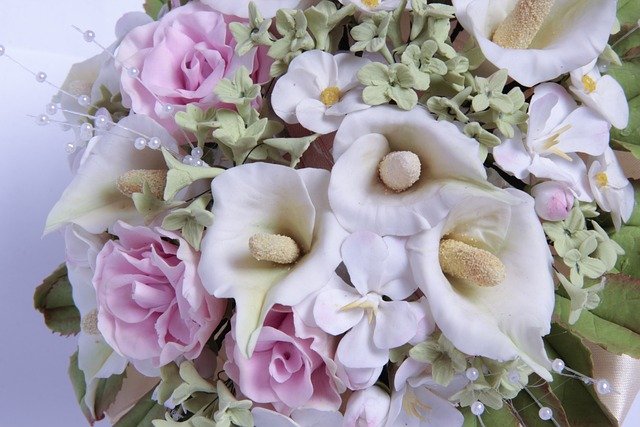
#2. Calla Lily
Calla Lilies are known for their showy, funnel-shaped blooms that come in a variety of colors, including white, pink, yellow, orange, and red. They are popular as cut flowers and are often used in wedding bouquets and other special events.
- Scientific Name: Zantedeschia aethiopica
- Plant Type: Calla Lilies are herbaceous perennials that are part of the Araceae family. They are native to South Africa and are grown for their striking, trumpet-shaped blooms.
- Sunlight Needs: Calla Lilies prefer partial to full sunlight, but they can also tolerate some shade. They should be protected from direct afternoon sunlight, which can scorch their leaves.
- Plant Size: Calla Lilies can grow up to 2-3 feet (0.6-0.9 meters) tall and 1-2 feet (0.3-0.6 meters) wide. They have long, narrow leaves that are up to 18 inches (45 cm) long.
- Growing Zones: Calla Lilies can grow in USDA hardiness zones 8-10, but they can also be grown in colder climates as annuals.
- Soil Needs: Calla Lilies prefer well-draining, fertile soil that is rich in organic matter. They require regular watering, but the soil should not be waterlogged.

#3. Tulip
Tulips are known for their bright, showy blooms that come in a wide range of colors, including red, yellow, pink, purple, and white. They are popular as cut flowers and are often used in floral arrangements.
- Scientific Name: Tulipa
- Plant Type: Tulips are bulbous perennials that are part of the Liliaceae family.
- Sunlight Needs: Tulips require full sun to partial shade. They need at least 6 hours of direct sunlight per day to grow and bloom properly.
- Plant Size: The size of a Tulip plant can vary depending on the variety, but they typically grow between 6-28 inches (15-70 cm) tall.
- Growing Zones: Tulips can grow in USDA hardiness zones 3-8, depending on the variety.
- Soil Needs: Tulips prefer well-draining soil that is rich in organic matter. The soil should be slightly acidic to neutral, with a pH of 6.0-7.0.

#4. Camellia
Camellias are known for their beautiful, waxy flowers that come in a range of colors, including white, pink, red, and variegated. They are popular as ornamental plants and are often used in landscaping and as cut flowers. Camellias require regular watering
- Scientific Name: Camellia japonica
- Plant Type: Camellias are evergreen shrubs or small trees that are part of the Theaceae family. They are native to Asia and are grown for their showy, rose-like flowers.
- Sunlight Needs: Camellias prefer partial shade or filtered sunlight. They can tolerate some direct sunlight, but too much can damage their leaves and flowers.
- Plant Size: The size of a Camellia plant can vary depending on the variety, but they typically grow between 6-20 feet (1.8-6 meters) tall and 6-10 feet (1.8-3 meters) wide.
- Growing Zones: Camellias can grow in USDA hardiness zones 7-9, but some varieties can tolerate zone 6.
- Soil Needs: Camellias prefer well-draining soil that is slightly acidic, with a pH between 5.0-6.5. They also benefit from the addition of organic matter, such as compost or leaf litter, to the soil.
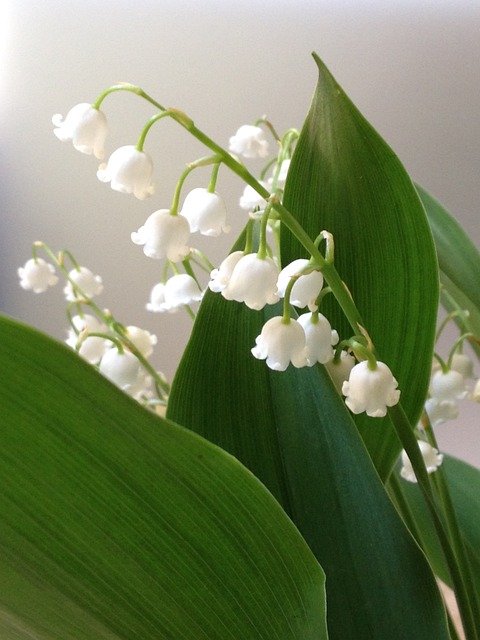
#5. Lily of the Valley
Lily of the Valley is associated with good luck and is believed to bring happiness and prosperity. In the language of flowers, it is often used to symbolize purity, sweetness, and the return of happiness.
- Plant Type: Lily of the Valley is a herbaceous perennial that produces small, bell-shaped flowers in the spring.
- Sunlight Needs: Lily of the Valley thrives in partial to full shade. It can tolerate some morning sun, but too much direct sunlight can scorch the leaves and flowers.
- Plant Size: Lily of the Valley typically grows to be about 6-12 inches tall and 6-12 inches wide. It spreads via underground rhizomes, so it can form dense colonies over time.
- Growing Zones: Lily of the Valley is hardy in USDA zones 2-9. It can tolerate cold temperatures and is often used as a ground cover in colder climates.
- Soil Needs: Lily of the Valley prefers rich, well-draining soil that is moist but not waterlogged. It can tolerate a wide range of soil pH levels, but performs best in slightly acidic soil (pH 5.5-7).

#6. Star Jasmine
Star Jasmine, also known by its scientific name Trachelospermum jasminoides, is a woody vine that produces beautiful white, star-shaped flowers with a sweet fragrance. Here are some key details to keep in mind if you’re interested in growing Star Jasmine:
- Plant Type: Star Jasmine is an evergreen vine that can grow up to 20 feet tall. It has dark green, glossy leaves that provide an attractive backdrop for its fragrant flowers.
- Sunlight Needs: Star Jasmine prefers partial to full sun, but can also tolerate some shade. It performs best when it receives at least 4-6 hours of direct sunlight per day.
- Plant Size: Star Jasmine can grow up to 20 feet tall and 10 feet wide if given enough space to spread. It can also be trained to grow along trellises, fences, or walls.
- Growing Zones: Star Jasmine is hardy in USDA zones 8-11. It can tolerate some cold temperatures, but may lose its leaves in colder climates.
- Soil Needs: Star Jasmine prefers well-draining soil that is rich in organic matter. It can tolerate a wide range of soil pH levels, but performs best in slightly acidic to neutral soil (pH 6.0-7.5).

#7. Snowdrop
Snowdrop flowers are a delicate and early-blooming plant that is perfect for adding a touch of beauty and hope to your garden in the early spring. Whether you’re looking to add them to a rock garden or naturalized area, snowdrops are an excellent choice.
- Scientific Name: Galanthus nivalis
- Plant Type: Bulbous perennial flower
- Sunlight Needs: Full sun to partial shade
- Plant Size: 3-6 inches in height and width
- Growing Zones: USDA hardiness zones 3-7
- Soil Needs: Moist, well-draining soil with a neutral to alkaline pH

#8. Daisy
Daisy flowers are versatile and cheerful plant that is perfect for a wide range of garden settings. Whether you’re looking to add them to a rock garden or use them as a border plant, daisies are an excellent choice.
- Scientific Name: Bellis perennis
- Plant Type: Perennial or biennial flower
- Sunlight Needs: Full sun to partial shade
- Plant Size: 6-12 inches in height and width
- Growing Zones: USDA hardiness zones 4-8
- Soil Needs: Well-draining, moist soil with a neutral to alkaline pH.

#9. Orchid
Orchid flowers are a beautiful and elegant plant that is perfect for adding a touch of beauty and sophistication to any indoor space.
- Scientific Name: Orchidaceae (family name)
- Plant Type: Perennial flower
- Sunlight Needs: Bright, indirect light
- Plant Size: Varies depending on the type of orchid, but can range from a few inches to several feet in height and width.
- Growing Zones: This varies depending on the type of orchid, but most orchids are grown indoors or in greenhouse settings due to their specific temperature and humidity requirements.
- Soil Needs: Most orchids are epiphytes, which means they grow on other plants or surfaces instead of in soil. They require a well-draining medium, such as bark, moss, or coconut coir.

#10. Carnation
Carnation flowers are a fragrant and colorful plant that is perfect for adding a touch of beauty and tradition to your garden or home. Whether you’re looking to add them to a floral arrangement or grow them in your garden, carnations are an excellent choice for their beauty and ease of care.
- Scientific Name: Dianthus caryophyllus
- Plant Type: Herbaceous perennial flower
- Sunlight Needs: Full sun to partial shade
- Plant Size: 6-24 inches in height and 6-18 inches in width, depending on the cultivar
- Growing Zones: USDA hardiness zones 6-10
- Soil Needs: Well-draining soil with a neutral to slightly alkaline pH.

#11. White Poppy
White poppy flowers are an elegant and symbolic plant that is perfect for adding a touch of beauty and meaning to your garden or home. Whether you’re looking to use them in a floral arrangement or grow them in your garden,
- Scientific Name: Papaver somniferum
- Plant Type: Annual or biennial flower
- Sunlight Needs: Full sun to partial shade
- Plant Size: 2-4 feet in height and 1-2 feet in width
- Growing Zones: USDA hardiness zones 7-10
- Soil Needs: Well-draining, fertile soil with a neutral to slightly acidic pH.

#12. Magnolia
Magnolia flowers are a majestic and fragrant plant that is perfect for adding a touch of beauty and elegance to your garden or landscape. Whether you’re looking to plant them as a tree or a shrub, or simply enjoy their fragrant blooms,
- Scientific Name: Magnolia spp.
- Plant Type: Deciduous or evergreen tree or shrub
- Sunlight Needs: Full sun to partial shade
- Plant Size: Varies depending on the cultivar, from small shrubs to large trees reaching up to 80 feet in height
- Growing Zones: Varies depending on the cultivar, typically USDA hardiness zones 5-9
- Soil Needs: Well-draining, moist, and slightly acidic soil
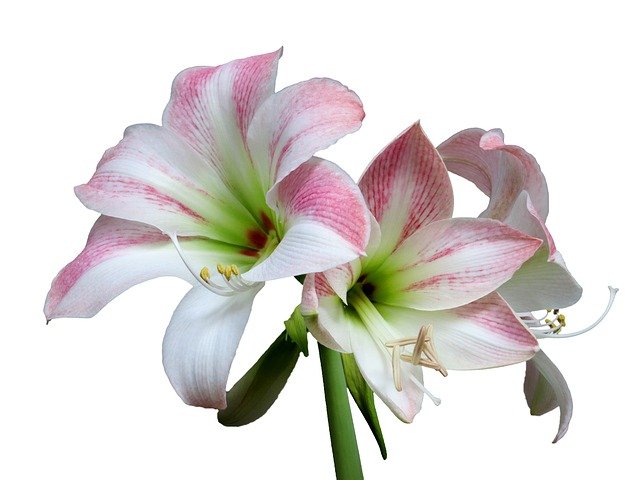
#13. Amaryllis
Amaryllis flowers are a bold and beautiful plant that is perfect for adding a touch of elegance to any indoor space. Whether you’re looking to enjoy their stunning blooms as a houseplant, or give them as a gift during the holidays, amaryllis are an excellent choice for their beauty,
- Scientific Name: Hippeastrum spp.
- Plant Type: Bulb plant
- Sunlight Needs: Bright, indirect light
- Plant Size: Varies depending on the cultivar, typically reaching up to 2 feet in height
- Growing Zones: Varies depending on the cultivar, typically USDA hardiness zones 9-11
- Soil Needs: Well-draining, fertile soil with a neutral to slightly acidic pH.

#14. Clematis
Clematis flowers are a versatile and colorful plant that is perfect for adding a touch of beauty and elegance to your garden or landscape. Whether you’re looking to cover a fence, a wall, or a trellis, or simply enjoy their stunning blooms,
- Scientific Name: Clematis spp.
- Plant Type: Climbing vine
- Sunlight Needs: Full sun to partial shade
- Plant Size: Varies depending on the cultivar, from small shrubs to large vines reaching up to 20 feet in height
- Growing Zones: Varies depending on the cultivar, typically USDA hardiness zones 4-9
- Soil Needs: Well-draining, fertile soil with a neutral to slightly acidic pH.

#15. Columbine
Columbine flowers are a delicate and charming wildflower that is perfect for adding a touch of natural beauty to any garden or landscape. Whether you’re looking to attract pollinators or simply enjoy their unique and vibrant blooms,
- Scientific Name: Aquilegia spp.
- Plant Type: Herbaceous perennial wildflower
- Sunlight Needs: Full sun to partial shade
- Plant Size: Varies depending on the cultivar, typically reaching up to 3 feet in height
- Growing Zones: Varies depending on the cultivar, typically USDA hardiness zones 3-9
- Soil Needs: Well-draining, fertile soil with a neutral to slightly acidic pH.
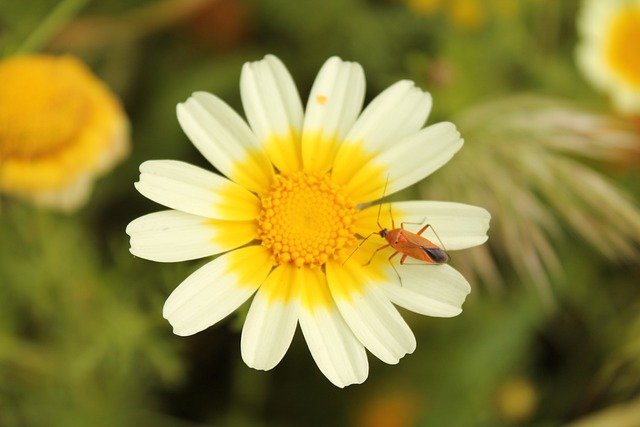
#16. Corn Marigold
Corn marigold is a cheerful and easy-to-grow wildflower that is perfect for adding a splash of vibrant color to any garden or landscape. Whether you’re looking to attract pollinators, add a pop of yellow to your wildflower meadow, or explore its medicinal properties,
- Scientific Name: Glebionis segetum (formerly Chrysanthemum segetum)
- Plant Type: Annual wildflower
- Sunlight Needs: Full sun
- Plant Size: Typically reaches up to 3 feet in height
- Growing Zones: USDA hardiness zones 3-9
- Soil Needs: Tolerant of a wide range of soil types, but prefers well-draining soil with a neutral to slightly alkaline pH.

#17. Cosmos
Cosmos flowers are a bright and airy wildflower that is perfect for adding a touch of natural beauty to any garden or landscape. Whether you’re looking to attract pollinators, add a pop of color to your cottage garden,
- Scientific Name: Cosmos bipinnatus
- Plant Type: Annual wildflower
- Sunlight Needs: Full sun
- Plant Size: Typically reaches up to 4 feet in height
- Growing Zones: USDA hardiness zones 2-11
- Soil Needs: Tolerant of a wide range of soil types, but prefers well-draining soil with a neutral to slightly acidic pH.

#18. Candytuft
Candytuft, also known by its scientific name Iberis sempervirens, is a low-growing perennial plant that produces clusters of delicate white or pink flowers in the spring. Here are some key details to keep in mind if you’re interested in growing Candytuft:
- Plant Type: Candytuft is a herbaceous perennial that grows in compact mounds. It has evergreen foliage that provides year-round interest in the garden.
- Sunlight Needs: Candytuft prefers full sun to partial shade. It can tolerate some shade, but may produce fewer flowers in low light conditions.
- Plant Size: Candytuft typically grows to be about 6-12 inches tall and 12-18 inches wide. It spreads slowly via underground rhizomes, so it can form dense mats over time.
- Growing Zones: Candytuft is hardy in USDA zones 3-9. It can tolerate cold temperatures and is often used as a ground cover in colder climates.
- Soil Needs: Candytuft prefers well-draining soil that is rich in organic matter. It can tolerate a wide range of soil pH levels, but performs best in slightly acidic soil (pH 5.5-7.0).

#19. Dahlias
Dahlias, also known by their scientific name Dahlia spp., are flowering plants that come in a wide variety of colors and sizes. They are prized for their showy blooms and long flowering period. Here are some key details to keep in mind if you’re interested in growing Dahlias:
- Plant Type: Dahlias are herbaceous perennials that grow from tubers. They can range in size from compact 1-foot plants to tall plants that reach up to 6 feet in height.
- Sunlight Needs: Dahlias prefer full sun to partial shade. They require at least 6 hours of direct sunlight per day to produce their best blooms.
- Plant Size: Dahlias can range in size from small, compact plants to large plants that require staking to keep them upright. The size of the plant will depend on the variety that you choose.
- Growing Zones: Dahlias are typically hardy in USDA zones 8-11, although some varieties can be grown in colder climates. In colder climates, the tubers will need to be lifted and stored indoors during the winter.
- Soil Needs: Dahlias prefer well-draining soil that is rich in organic matter. They can tolerate a wide range of soil pH levels, but prefer slightly acidic to neutral soil (pH 6.0-7.0)

#20. Dogwood
Dogwood trees are an iconic choice for their showy flowers, attractive foliage, and relatively low maintenance. Whether you’re looking to add a specimen tree to your garden, enhance your landscape design,
- Scientific Name: Cornus spp.
- Plant Type: Deciduous tree
- Sunlight Needs: Full sun to partial shade
- Plant Size: Can reach up to 40 feet in height, depending on variety
- Growing Zones: USDA hardiness zones 4-9
- Soil Needs: Well-draining soil with a slightly acidic pH.
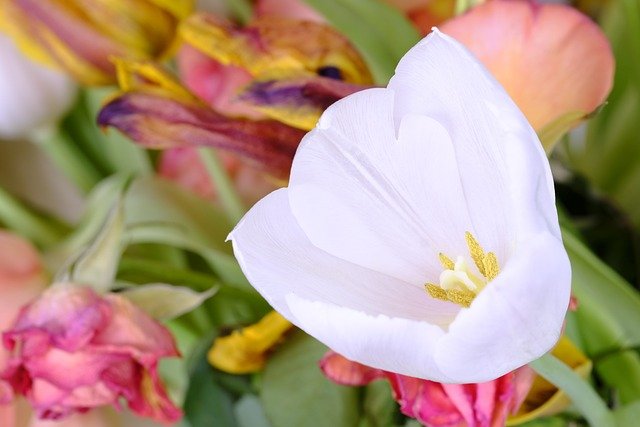
#21. Easter Lily
Easter lilies are a popular and iconic flower that is perfect for adding beauty and fragrance to the Easter season. Whether you’re looking to give them as a gift, decorate your home, or simply enjoy their natural beauty.
- Scientific Name: Lilium longiflorum
- Plant Type: Bulb plant
- Sunlight Needs: Partial sun to bright indirect light
- Plant Size: Can reach up to 3 feet in height
- Growing Zones: USDA hardiness zones 7-10, but can also be grown as an indoor plant or annual in cooler climates
- Soil Needs: Well-draining soil with a slightly acidic pH.

#22. Lotus
Lotus flowers are a revered and symbolic flower that is perfect for adding beauty and spiritual significance to your garden or water feature. Whether you’re looking to grow them for ornamental or culinary purposes,
- Scientific Name: Nelumbo nucifera
- Plant Type: Aquatic plant
- Sunlight Needs: Full sun
- Plant Size: Can reach up to 6 feet in height and spread up to 10 feet, depending on variety
- Growing Zones: USDA hardiness zones 5-10
- Soil Needs: Rich, loamy soil with a pH between 7.0-8.0.
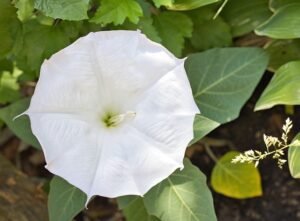
#23. Moonflowers
Moonflowers are a fragrant and beautiful flower that is perfect for adding nighttime interest and fragrance to your garden. Whether you’re looking to attract nocturnal pollinators, add beauty to your garden, or simply enjoy their sweet fragrance.
- Scientific Name: Ipomoea alba
- Plant Type: Vine plant
- Sunlight Needs: Full sun to partial shade
- Plant Size: Can reach up to 15 feet in length
- Growing Zones: USDA hardiness zones 9-11
- Soil Needs: Well-draining soil with a pH between 6.0-7.0.

#24. Catmint Flower
Catmint is an easy-to-grow and fragrant flower that is perfect for adding beauty and fragrance to your garden. Whether you’re looking to attract pollinators, enjoy its calming effect on cats, or simply enjoy its beautiful blooms and foliage,
- Scientific Name: Nepeta cataria
- Plant Type: Herbaceous perennial
- Sunlight Needs: Full sun to partial shade
- Plant Size: Can reach up to 2-3 feet in height and spread up to 3-4 feet
- Growing Zones: USDA hardiness zones 3-8
- Soil Needs: Well-draining soil with a pH between 6.0-7.5.

#25. Peony
Peonies are beautiful and fragrant flowers that can add a touch of elegance to any garden or landscape. While they do require some maintenance, they are relatively easy to grow and can provide years of beauty and enjoyment.
- Scientific Name: Paeonia
- Plant Type: Herbaceous perennial
- Sunlight Needs: Full sun to partial shade
- Plant Size: Can reach up to 2-4 feet in height and spread up to 3-4 feet
- Growing Zones: USDA hardiness zones 3-8
- Soil Needs: Well-draining soil with a pH between 6.5-7.5.
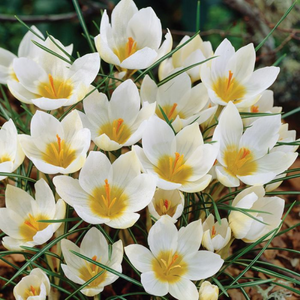
#26. Arabian Jasmine
Arabian Jasmine, also known by its scientific name Jasminum sambac, is a fragrant evergreen shrub that produces white, star-shaped flowers. Here are some key details to keep in mind if you’re interested in growing Arabian Jasmine:
- Plant Type: Arabian Jasmine is a tropical shrub that can grow up to 6 feet tall and 3 feet wide.
- Sunlight Needs: Arabian Jasmine prefers full sun to partial shade. It can tolerate some shade, but may produce fewer flowers in low light conditions.
- Plant Size: Arabian Jasmine can grow up to 6 feet tall and 3 feet wide. It has a dense growth habit and can be trained to grow as a small tree or a climbing vine.
- Growing Zones: Arabian Jasmine is hardy in USDA zones 9-11. It requires warm temperatures to thrive and may not survive in colder climates.
- Soil Needs: Arabian Jasmine prefers well-draining soil that is rich in organic matter. It can tolerate a wide range of soil pH levels, but performs best in slightly acidic soil (pH 6.0-7.5).
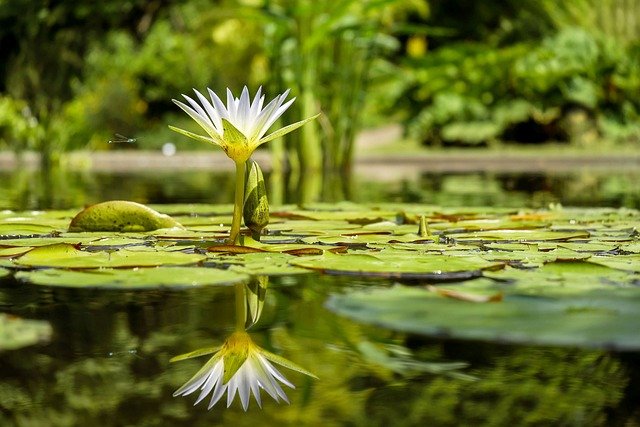
#27. Water Lily
Water lilies are beautiful and fascinating aquatic plants that can add a touch of serenity and beauty to any body of water.
- Plant Type: Water Lilies are aquatic perennials that grow from rhizomes that are buried in the soil at the bottom of a pond or other water feature. The leaves and flowers of the plant float on the surface of the water.
- Sunlight Needs: Water Lilies require full sun to bloom properly. They should receive at least 6 hours of direct sunlight per day.
- Plant Size: Water Lilies can range in size from small, compact plants to large plants that spread several feet across the surface of the water. The size of the plant will depend on the variety that you choose.
- Growing Zones: Water Lilies are hardy in USDA zones 3-11, although some varieties may be better suited to certain growing zones. They can tolerate a range of water temperatures but prefer warmer water.
- Soil Needs: Water Lilies require a special aquatic soil that is heavy and dense to anchor the rhizomes in place. The soil should be placed in a container that is then submerged in the water.
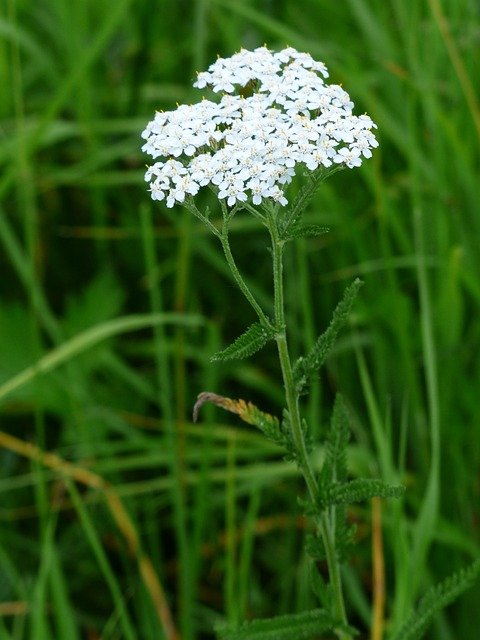
#28. Gardenia
Gardenias, also known by their scientific name Gardenia jasminoides, are beautiful, fragrant shrubs that are prized for their large, white blooms. Here are some key details to keep in mind if you’re interested in growing Gardenias:
- Plant Type: Gardenias are evergreen shrubs that can grow up to 6 feet tall and 4 feet wide. They have glossy, dark green leaves and large, white flowers that are highly fragrant.
- Sunlight Needs: Gardenias require partial shade to thrive. They should be planted in an area that receives morning sun and afternoon shade.
- Plant Size: Gardenias can grow up to 6 feet tall and 4 feet wide. They are slow-growing plants, and it can take several years for them to reach their full size.
- Growing Zones: Gardenias are hardy in USDA zones 8-11. They are sensitive to cold temperatures and should be protected from frost and freezing temperatures.
- Soil Needs: Gardenias prefer well-draining, acidic soil that is rich in organic matter. The soil should be kept consistently moist, but not waterlogged.

#29. Hibiscus
Hibiscus plants, also known by their scientific name Hibiscus rosa-sinensis, are popular tropical flowering plants that are prized for their large, colorful blooms. Here are some key details to keep in mind if you’re interested in growing Hibiscus:
- Plant Type: Hibiscus plants are woody shrubs that can grow up to 15 feet tall in their native tropical regions. In other regions, they are often grown as small trees or potted plants.
- Sunlight Needs: Hibiscus plants require full sun to partial shade to thrive. They should be planted in an area that receives at least 6 hours of direct sunlight per day.
- Plant Size: Hibiscus plants can grow up to 15 feet tall in their native tropical regions. In other regions, they can reach a height of 6-10 feet when grown as small trees or 3-6 feet when grown as potted plants.
- Growing Zones: Hibiscus plants are hardy in USDA zones 9-11. They are sensitive to cold temperatures and should be protected from frost and freezing temperatures.
- Soil Needs: Hibiscus plants prefer well-draining, fertile soil that is rich in organic matter. The soil should be kept consistently moist, but not waterlogged.

#30. Crinum Lily
Crinum lilies are a beautiful and hardy garden plant that are well-suited to a wide range of growing conditions. They offer not only ornamental value, but also a range of health benefits.
- Plant Type: Crinum lilies are herbaceous perennial plants that can grow up to 6 feet tall and wide. They have large, showy flowers that come in a range of colors, including white, pink, and purple.
- Sunlight Needs: Crinum lilies prefer full sun to partial shade. They should be planted in an area that receives at least 6 hours of direct sunlight per day.
- Plant Size: Crinum lilies can grow up to 6 feet tall and wide.
- Growing Zones: Crinum lilies are hardy in USDA zones 8-11. They are sensitive to cold temperatures and should be protected from frost and freezing temperatures.
- Soil Needs: Crinum lilies prefer well-draining soil that is rich in organic matter. The soil should be kept consistently moist, but not waterlogged.

#31. Butterfly Pea
Butterfly Pea is a beautiful and nutritious flowering plant that offers a range of health benefits and culinary uses. By choosing sustainably grown and harvested cultivars, you can enjoy the beauty and benefits of this wonderful plant while helping to protect it for future generations.
- Scientific Name: Clitoria ternatea
- Plant Type: Butterfly Pea is a perennial vine that can grow up to 20 feet long. It has delicate, trumpet-shaped flowers that range in color from blue to purple, and occasionally white.
- Sunlight Needs: Butterfly Pea prefers full sun to partial shade. It should be planted in an area that receives at least 6 hours of direct sunlight per day.
- Plant Size: Butterfly Pea can grow up to 20 feet long, but can be kept smaller through regular pruning.
- Growing Zones: Butterfly Pea is hardy in USDA zones 9-11, but can be grown as an annual in cooler climates. It is sensitive to frost and freezing temperatures and should be protected during cold weather.
- Soil Needs: Butterfly Pea prefers well-draining soil that is rich in organic matter. It can tolerate a wide range of soil types but should be kept consistently moist.
Different Colour Flowers Name
Type of Flower - Color
| Flowers Type | |
| White Flowers Name | Blue Flowers Name |
| Yellow Flowers Name | Pink Flowers Name |
| Purple Flowers Name | Red Flowers Name |

